Wa Palace, located in Zhonghuangshan Mountain, Shexian County, Handan City, Hebei Province, covers an area of 5 square kilometers. It consists of five parks: service area, Butianyuan Garden, Butianhu Lake, Wa Palace and Butianyu Valley. It is the place where Nuwa "builds human beings with earth and makes stone to fill the sky" in myth and legend. It is the largest building in China and the earliest time when it was built to worship human beings. The Ancient Architectural Complex of the First Ancestor Nuwa.
Wa Imperial Palace was built in the Northern Qi Dynasty. At the beginning, it was built by Emperor Wenxuan Gaoyang of the Northern Qi Dynasty. At the beginning, it opened three stone chambers and carved several gods. After generations of repairs and renovations, the Wa Palace now covers an area of 760,000 square meters. Nowadays, most of the buildings are in Ming and Qing Dynasties, while the relics of the Northern Qi Dynasty leave only grottoes and cliff inscriptions, totaling 6, which is the earliest and the largest number of words in the existing cliff inscriptions in China.
Every year from the first day of March to the eighteenth day of March in the lunar calendar, it is the day of the local temple fair, Nuwa's sacrifice. It was the first time that people from many parts of the country and overseas Chinese came to worship the humanities of the Chinese people. It was the largest, earliest and most influential historical and cultural relic of the worship of Nuwa in China. It was known as the "ancestral Temple of China" and one of the sacred places for ancestors in China.
In 1996, the Wa Palace was listed as a national key cultural relic protection unit, and on October 15, 2015, it was rated as a national AAAAA tourist attraction. In 2012, the Wa Palace scenic spot was listed as a national scenic spot.
Wa Palace is located on Zhonghuangshan Mountain in Shexian County, Hebei Province. It is one of the five sacred places for ancestors in China. It is the largest historical and cultural relic worshiping Nuwa with the earliest construction time and the widest influence in the country. It is known as the "Chinese ancestral temple". Founded in the Northern Qi Dynasty, from 550 AD to 577 AD, it has a history of more than 1,400 years. It is the place where Nuwa's "Stone Refining, Heaven Refining and Man Creating" in myth and legend.
Wa Palace, commonly known as "Grandma's Top", is located in the northwest of Shexian County, on the mountainside of Tang Wang'e. It is one of the eight ancient scenic spots in Shexian County. It is a well-known tourist attraction far and near. Wa imperial palace is in accordance with the situation on the mountain, skillfully borrowing nature, known as "the realm created by heaven and earth". It is not only magnificent and unique in architecture, but also well preserved the rare cliff carvings in China. It is a rare natural and cultural landscape and is listed as a key cultural relic protection unit in the country.
In 2005, Shexian Wa Palace was rated as a national 4A-level tourist attraction; in 2006, Shexian was named "the Town of Chinese Nuwa Culture" by the Chinese Federation of Chinese Literature and the Chinese People's Association, and the "Research Center of Chinese Nuwa Culture" was established, and the "Nuwa Festival" was listed in the first batch of national folk intangible cultural heritage.
Shexian will also liaise with various Nvwa sites and experts and scholars in China, establish the "Chinese Nvwa Cultural Fellowship", strengthen communication and exchange, jointly organize academic seminars, in-depth excavation and research of Nvwa culture, and jointly declare world cultural heritage.
On October 31, 2012, the State Council issued a circular on the publication of the list of the eighth batch of national scenic spots. The Wa Palace scenic spot was approved as a "national scenic spot". In 2013, there were 1.714 million visitors to Wa Palace and 56,000 overseas visitors.
The Wa Palace in Shexian County is the largest and earliest ancient building worshiping the ancient goddess Wa, built in the 6th century A.D. Up to now, it has a history of more than 1400 years. It was built by Emperor Wenxuan during his reign in Gaoyang (550 - 560 A.D.).
According to the inscriptions here, the site was first built at the time of Emperor Wendi of the Han Dynasty, but at the beginning it was very small, with only three temples (only three stone chambers and some gods). After the construction of successive dynasties, the scale of the site was expanding. According to the Records of Shexian County, Emperor Wenxuan of the Northern Qi Dynasty took Yecheng (Linzhang County, Handan City, now with Tonglaotai) as its capital and Jinyang as its accompanying capital. Emperor Wenxuan Gaoyang traveled from Yecheng (Linzhang) to Jinyang and came and went under the hills to leave the palace for his patrol. (It's controversial. It's not a departure.)
Because the mountains are emerald and the beautiful Zhonghuangshan (Nvwa Mountain) is a must for the emperor of the ocean to travel to the capital city of the Northern Qi Dynasty, Yecheng (Linzhang County, Handan City, now with Tonglaotai) and Jinyang, and the emperor of Gaoyang is luxurious in nature, loves to revitalize civil engineering, and especially likes to carve classical sculptures, so he chose Phoenix Mountain to build the Palace of the Emperor of Wa. 。 Emperor Wenxuan Gaoyang "believed in Shishi and liked carving Buddhist scriptures" built the Wa Imperial Palace on a large scale here, and excavated stone chambers at the foot of the mountain, carved Buddhist statues inside, and later laid the Buddhist scriptures "under the rock wall". By the Ming Dynasty, many palaces had been built one after another, and in the Qing Dynasty they had been rebuilt on a large scale. Over the years, it has gradually become a group of buildings covering more than 15,000 square meters.
For thousands of years, Wa Palace has been burned down for generations. Today, most of the buildings seen are Ming and Qing Dynasty buildings, while the remains of Beiqi Dynasty are only grottoes and cliff inscriptions. There are three caves on the cliff wall, besides Wahuang Pavilion's base cave, there are two caves on the right side, namely "Eyesight" and "Silkworm Aunt". The statues in the caves have been destroyed and incomplete, but the inscriptions on the inner wall are relatively intact.
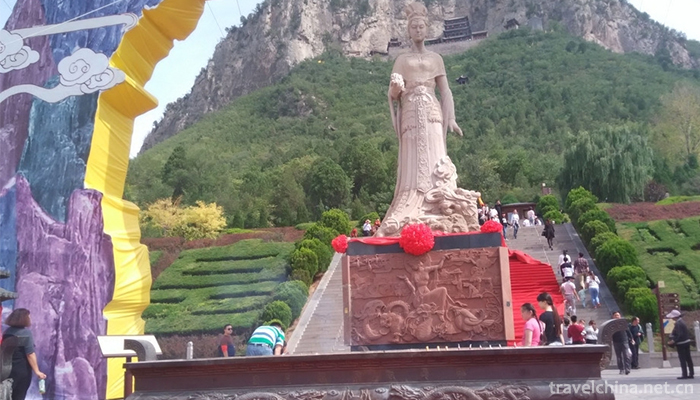
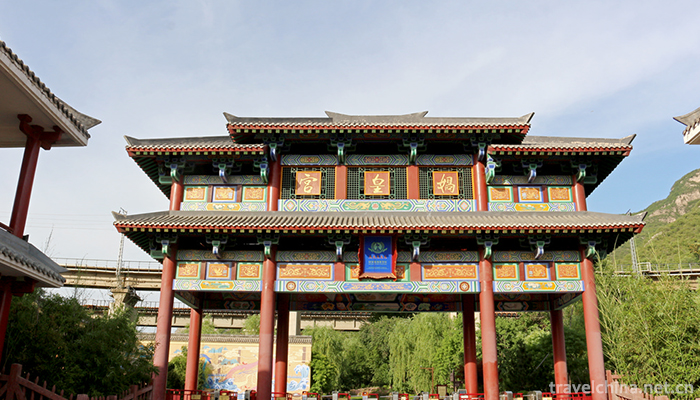
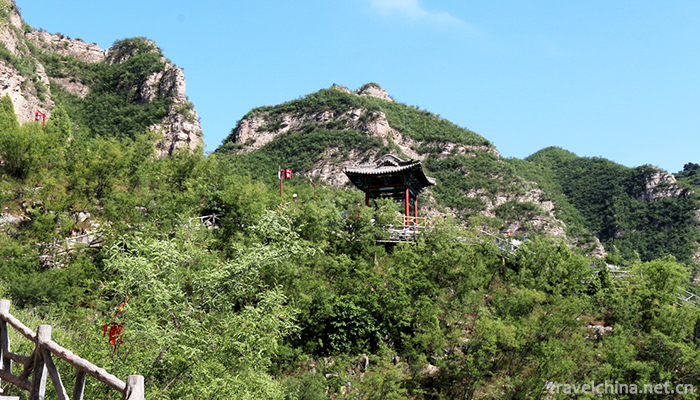

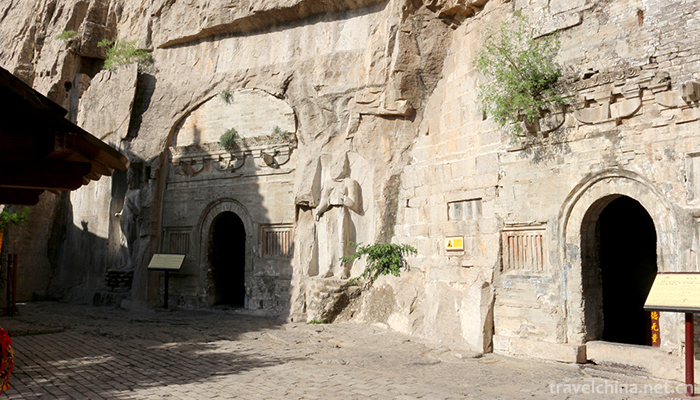

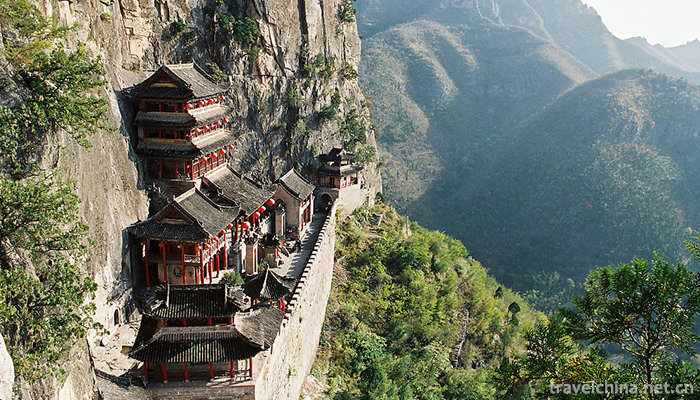

0 Questions
Ask a Question
Your email address will not be published.